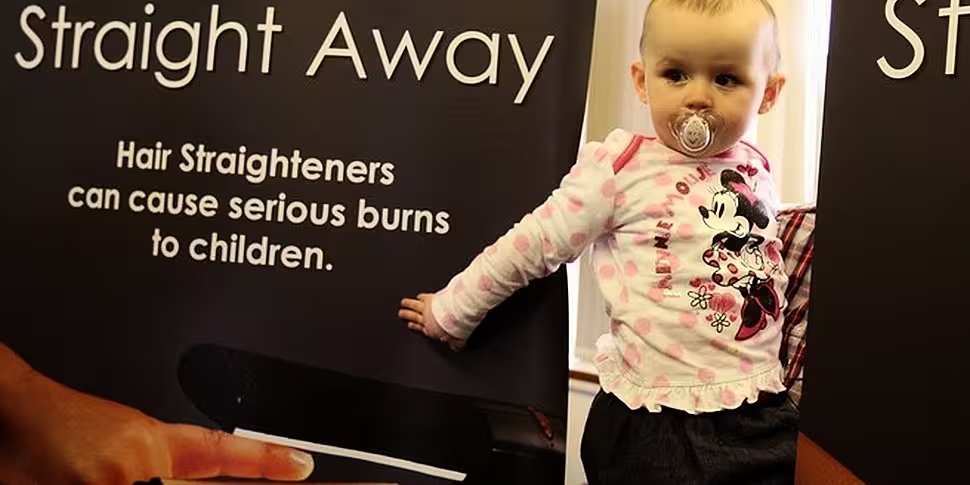UK burns units say one in 20 of all admissions for children's burns last year involved hair straighteners.
Figures from the international burns injury database show there were 392 child admissions to specialist units in the UK in 2015 for injuries that involved hair straighteners.
One in four (27%) parents who use electric hair tools said they had left one on and unattended.
"Children are at even greater risk of burns since their skin can be 15 times thinner than that of adults," said Paul Fuller, chairman of trustees at the Children’s Burns Trust charity.
"A burn or scald at this age could need years of repeated surgery as the child grows, because scarred tissue does not grow with them".
"To protect children, we need to recognise the potential dangers of hair straighteners."
Hair straighteners and curling irons can reach temperatures of 235 degrees Celsius and can stay hot for up to 40 minutes after being switched off.
The research is released to coincide with National Burns Awareness Day today.
Earlier this month, courts in Shropshire heard the case of a man who was tortured by three women using the hair styling tool last year.
The Shropshire Star reported that Thomas Mellor was left with burns and scars on his right arm after being branded by a hair straightener.
In the event of a serious burn, follow the three Cs:
-
Cool the burn with running tap water for 20 minutes. Do not apply ice, butter or toothpaste. Remove any clothing, jewellery or nappies.
-
Call for help – 111, 999 or local GP for advice.
-
Cover the cooled burn with loose Clingfilm or a clean non-fluffy cloth. Warm the patient.









